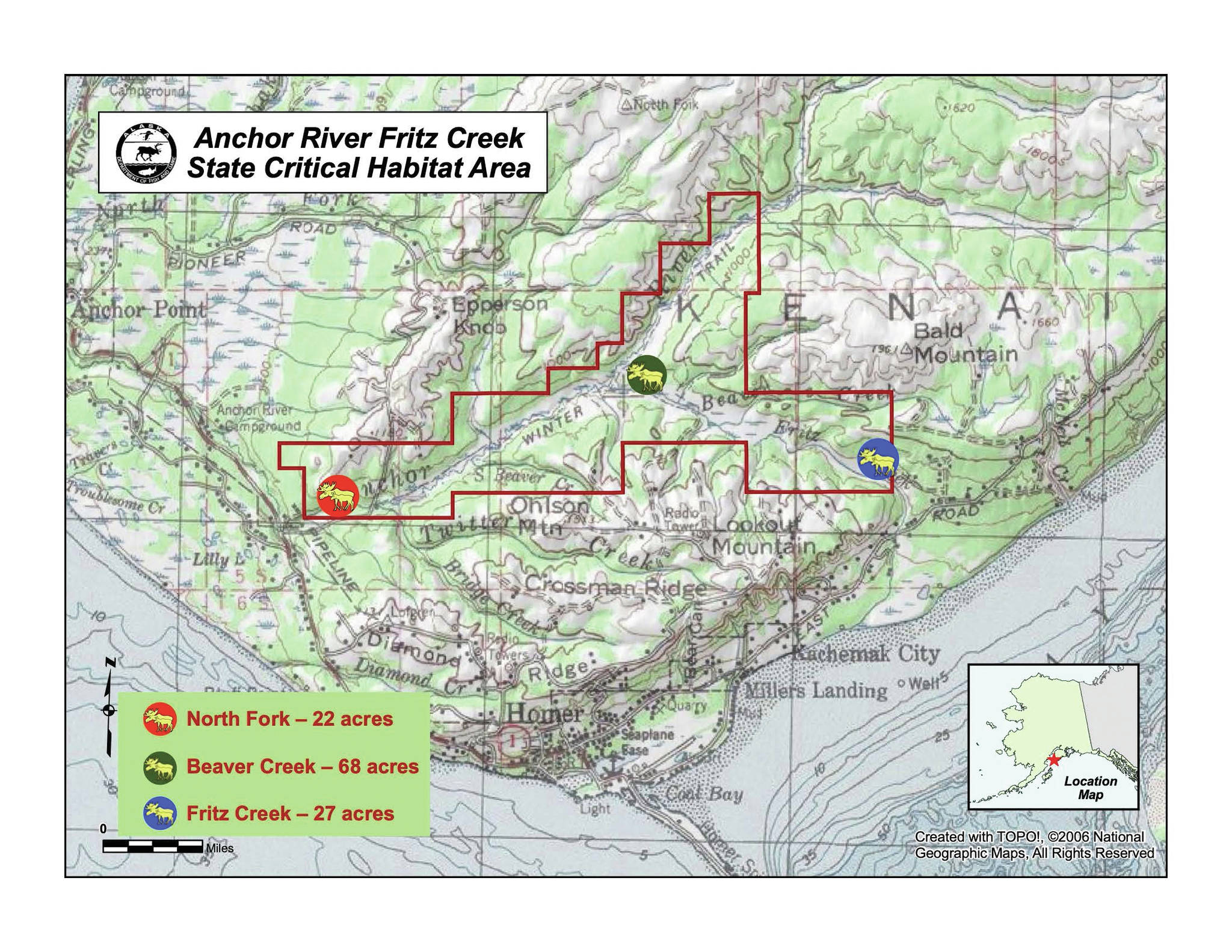A Homer contractor finished a wildlife enhancement project earlier this month to help regenerate willow patches in the Fritz Creek area.
Under an Alaska Department of Fish and Game grant funding three enhancement projects on the southern Kenai Peninsula, Moore and Moore Services did spruce tree clearing and willow mowing on an old hay field.
Another Homer area contractor, Fetterhoff Services, will work on enhancement projects in the Beaver Creek and North Fork Anchor River areas, all part of Game Management Unit 15. All of the projects involve cutting willow bushes back to encourage new growth that moose prefer. The total project area for the three sites is 117 acres, all on state lands, and will cost about $120,000 total for all three sites.
“If they mow them down from the root crown of the plant, it will rejuvenate and sprout,” said Sue Rodman with the Fish and Game Wildlife Enhancement & Spatial Analysis Program, Division of Wildlife Conservation. “The moose like that fresh growth. It has more digestible protein.”
While moose will browse willow that encourages growth, the bushes will grow in what are called “brooms,” for their appearance of tall, thin stalks that look like the straws of brooms. Brooms don’t have as much digestible protein, Rodman said.
Funding for the enhancement projects comes partially through an 11% excise tax on sales of firearms and ammunition mandated by the Federal Aid in Wildlife Restoration Act, commonly called the Pittman-Robertson Act. Through formulas, those funds are distributed back to the states to pay for up to 75% of the cost of programs like wildlife enhancement, wildlife research, development of access facilities for public use and hunter education. The state has to provide 25% of funds using fish and game license sales.
Rodman said it typically takes between two and three years for willow bushes to regenerate enough to provide moose browse. The enhancement projects also will cut small cottonwood trees back to stumps. Those stumps also will make new growth of saplings desirable to moose.
The North Fork project is the only site with cottonwood, but most of the trees in the area are large, mature cottonwoods that won’t be cut, said Matt James, the supervisor of the projects and an area administrator with the Homer Soil & Water Conservation District, one of the partners in the wildlife enhancement project. The North Fork site is off the lower North Fork Road before the bridge. The Beaver Creek site is on the Watermelon Trail on the north side of Lookout Mountain off Ohlson Mountain Road.
A longtime wildland firefighter, James said it’s interesting to see how in willow patches moose prefer some bushes.
“It’s amazing how they pick that out,” he said. “There’s areas that are heavily browsed and right adjacent to that is a patch of willow that isn’t touched. There’s no indicator why they wouldn’t eat that. They just know.”
James said the Fritz Creek project is near the old Tracy Avenue fire zone, but outside the burn area. The project site was part of a hay field project from a University of Alaska program in the 1980s. Small, Christmas-tree size spruce had started to grow back in the area, so Moore and Moore Services contractors had to first cut back those trees to make room for more willow to grow. The willow mowing is done in the winter when plants are dormant, James said.
“That’s to do it when it’s as cold as possible,” he said. “That way you get a cleaner break, if you will. It doesn’t splinter as bad.”
Initially, James said he thought Moore and Moore would only be able to do the spruce clearing this year, but they finished the willow mowing as well. The projects are outside of burn areas, he noted.
“The willow in burn areas is doing very well,” James said. “That’s the best way to regenerate.”
Fish and Game also will work with private landowners to do wildlife enhancement projects. Clearing fire breaks is another way of creating better habitat, Rodman said. Such programs can combine the benefit of creating moose habitat and mitigating for wildfires.
“It’s something we’re talking about so we can do better as stewards of the land we manage,” she said.


